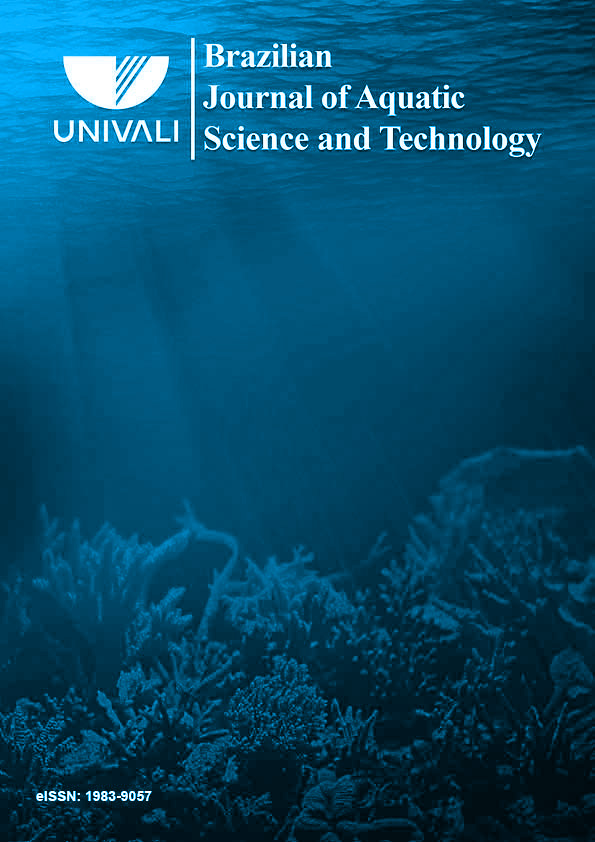Causas de morte e reabilitação de cetáceos no sudeste-sul do Brasil registrados através do monitoramento sistemático de praias
DOI:
https://doi.org/10.14210/bjast.v27n1.19193Keywords:
Strandings, Cetaceans, Rehabilitation, Conservation, MonitoringAbstract
Beach monitoring projects have been an important tool used in environmental licensing to assess the impacts of coastal and marine human activities. These projects usually have as part of their tasks to rescue and rehabilitate marine animals, including cetaceans. This study reviews cetacean rehabilitation cases carried out by the Santos Basin Beach Monitoring Project (PMP-BS) between 2016 and 2019. This project daily monitors approximately 2100 km of coastline along the southeast-south Brazilian coast to record marine tetrapods and rehabilitate live animals when possible. In the analyzed period, 4531 stranding of 27 cetacean species were recorded. Most were dead animals (99%, n = 4482) and only 1% (n = 49) were found alive. To assess patterns in causes of death it was decided to use only necropsies performed on fresher carcasses (n = 863). Anthropogenic causes of death were the most frequent (n = 270; 93%), mainly related to the respiratory system, possibly caused by drowning derived from interactions with fishing gear. Of the animals found alive, 36 were taken to rehabilitation bases, but 32 ended up dying during the rehabilitation process, one euthanasia was necessary and only three specimens were successfully rehabilitated and reintroduced into the wild. The most frequent species was Pontoporia blainvillei, both in dead (n = 2178) and live (n = 18) specimens. The results obtained by beach monitoring projects are important due to their effort standardization and homogenous activity protocols. Their results serve to guide and direct dedicated field research, highlighting the value of accurate and continuous stranding records. Even considering that the number of animals returned to their environment was low, learning from animals sent for treatment is of great importance for future rehabilitation cases.
Key words: Strandings, Cetaceans, Rehabilitation, Conservation, Monitoring.
Downloads
Published
Issue
Section
License
Authors who publish with this journal agree to the following terms:
1. Authors retain copyright and grant the journal right of first publication with the work simultaneously licensed under a Creative Commons Attribution License that allows others to share the work with an acknowledgement of the work's authorship and initial publication in this journal.
2. Authors are able to enter into separate, additional contractual arrangements for the non-exclusive distribution of the journal's published version of the work (e.g., post it to an institutional repository or publish it in a book), with an acknowledgement of its initial publication in this journal.
3. Authors are permitted and encouraged to post their work online (e.g., in institutional repositories or on their website) prior to and during the submission process, as it can lead to productive exchanges, as well as earlier and greater citation of published work (See The Effect of Open Access).

